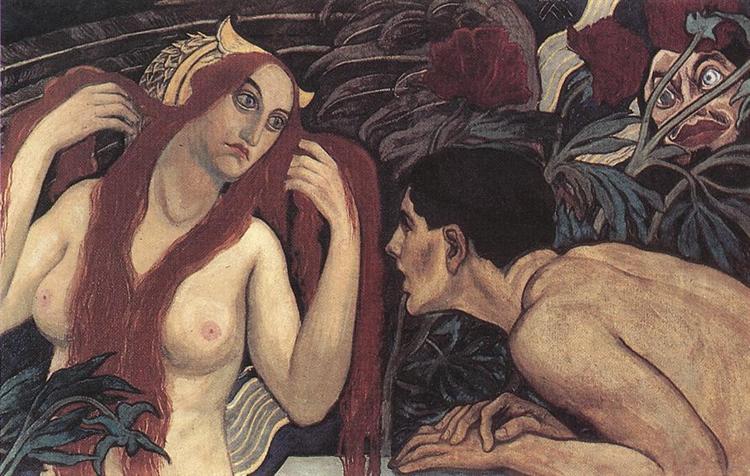Description
In his emblematic work "Vanidad - 1904", the Hungarian Aladár Körösf? The painting, dating from the year 1904, is erected as a testimony of the artistic ability and the conceptual deepening of Körösf? His secessionist influences.
At first glance, "vanity" captive for its balanced composition and detailed elaboration. The central figure of the work is a sitting woman, who fixes her hair while contemplating in a mirror. This act, simple and daily, is transformed under the skillful hand of the artist into a deep reflection on narcissism and self-reflection. The woman, embodied with a serene elegance, stops her gaze in the mirror in a gesture that evokes both self -indulgence and the search for identity.
The chromatic palette of the work is equally eloquent. The soft tones and warm nuances dominate the scene, from the women's clothing cakes to the subtle golden reflexes of the mirror and the environment. These colors not only embellish painting, but also reinforce the introspective and melancholic atmosphere that evokes the issue of vanity. The use of color by Körösf?
A prominent element of the composition is the mirror, a recurring symbol in the iconography of Vanitas, which has been used since baroque times to remember the expiration of life and the ephemeral qualities of the earthly. The mirror in "vanity" not only reflects the image of the woman, but can also be interpreted as a reflection of her soul, a portal towards her self -perception and self -analysis.
The influence of symbolism on Körösf's work? I-KRIESCH is undeniable. This artistic movement, which flourished at the end of the 19th and early twentieth centuries, was characterized by its approach to the representation of the spiritual, the dream and the mystical. In "vanity", the representation of women goes beyond the mere human figure to become a universal archetype that resonates with the central themes of symbolism: introspection, mortality and anesthesia of daily existence.
In addition, the imprint of Vienna's secession and applied arts is evident in the meticulous ornamentation of the frame and in the patterns that surround the female figure. Attention to detail and ornamental symmetry are distinctive characteristics of this artistic current that Körösf? I-KRIESCH adopts with a mastery.
In the context of Hungarian art, Körösf? Your participation in the Gödöll group? And his constant search for his own artistic identity positions him as a key figure in the transition to modernity in the art of his country.
"Vanity - 1904" by Aladár Körösf? Through this painting, the artist not only reflects on vanity as a subject, but also invites the viewer to an intimate and personal contemplation. It is undoubtedly a piece that exemplifies the conceptual depth and technical skill of the author, and continues to resonate with an intemporal relevance in the contemporary artistic scene.
KUADROS ©, a famous paint on your wall.
Hand-made oil painting reproductions, with the quality of professional artists and the distinctive seal of KUADROS ©.
Art reproduction service with satisfaction guarantee. If you are not completely satisfied with the replica of your painting, we refund your money 100%.

